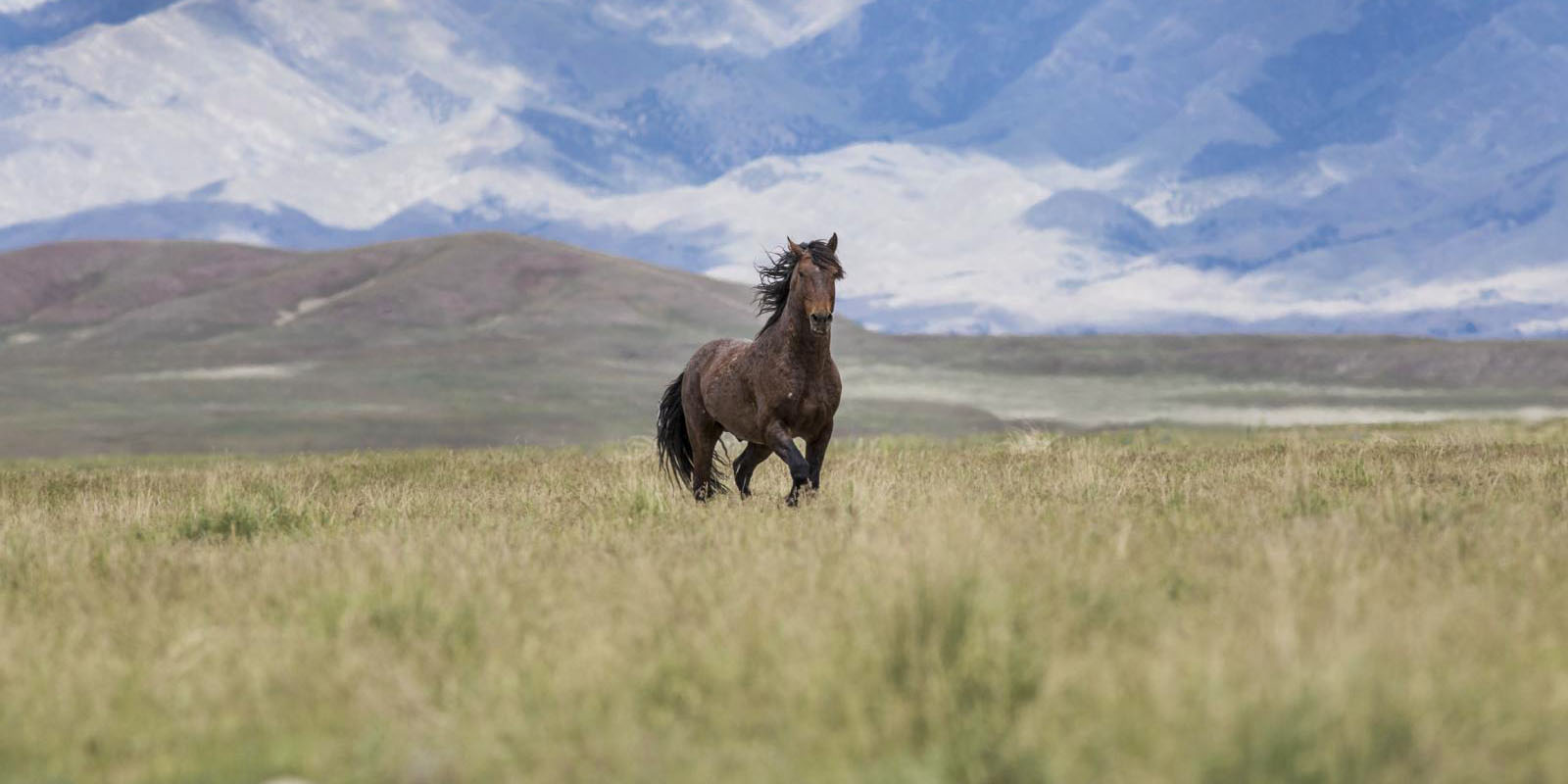Documentary filmmaker, Michael Alfuso, gives us glance at the people and positivity behind the world's largest fertility control program. Stay tuned for more -- we've got a mini documentary in the works.
Q: You just returned from a trip out to Nevada to document the AWHC fertility program on the historic Virginia Range. What did you know about this fertility control program going into this trip?
I knew that AWHC, along with a handful of local organizations, had teamed up to handle the administration on PZP fertility control by means of a local collective of volunteers. Last year I had the chance to document several of these volunteers for a day in the field, so I was excited to meet other members and see their progress first hand.
A trained volunteer moving horses to rescue one in need.
Q: Over the last year, you've documented multiple roundups across the western states. What is that experience like and how was this trip to Nevada different?
Roundups are not fun for anyone involved. Since 2017 I’ve documented a dozen roundups throughout the Western States, logging 73 days of roundup documentation. Granted, there are people who have put in many more days than myself, but that was plenty for me to paint an accurate picture.
Some states are more pleasant than others, but for the most part, it’s long days, exposure to elements, little sleep, very long commutes, and constant uncomfortable social situations. Let me put it this way - It’s like showing up to a party where the host can’t ask you to leave, nobody at the party wants you there, and you can’t go home until it’s over. Sound like fun? That’s because it isn’t.
This recent trip to Nevada to document the fertility control program was a polar opposite experience. Everyone I met was very warm and welcoming, the subject matter was uplifting and inspiring, and I witnessed the progress being made every day to protect and preserve the Virginia Range mustangs. Overall a fantastic trip.

Q: Who did you interview and what was something new you learned about the fertility control program?
I interviewed 5 volunteers, a member of Carson City Chamber of Commerce and a local real estate businessman. The most interesting thing I learned about was the level of organization within the group. Mainly comprised of retired volunteer workers, this group works seamlessly with one another, from the fertility control program to their rescue efforts (both of which I had the chance to document).

Q: The Virginia Range Fertility Control Program is the world's largest fertility control program. What takeaways did you gain during your visit that seem to support the program’s success?
I had the opportunity to witness just how effective a group of passionate and empowered volunteers can be. Whether it’s a rescue call or routine darting, the entire team treats this herd with the same respect and urgency as those caretakers guarding the last remaining African Rhinos. This level of passion is what it will take to protect and preserve all wildlife, including our precious Virginia Range Mustangs. Another notable aspect of this program is its constant communication with local businesses and the government. Progress can only happen when both sides of a discussion are willing to sit down at the same table and talk.

Q: Did you learn anything new about wild horses while you were there?
I learned first hand the long term effects that human interaction has on wild horses. During my recent assignment I filmed a rescue call in which it took a team of eight people nearly two hours to move an injured mustang into a rescue trailer.
The horse was so desensitized to human presence and even touch, that the team resorted to physically pushing the horse up onto the trailer. A truly wild mustang would have been afraid of people and gone right into the trailer within several minutes.
To the point of this assignment, many of us feel the biggest threat to the Virginia Range mustangs is humans. We must all give our equine friends their space, resist feeding or interacting with them, and work with local businesses and real-estate companies to develop a system of wildlife corridors to provide safe passage to food and water.
I hope this piece gives the public hope and insight to the good work that’s being done every day to preserve and protect America’s wild mustangs. My wish is to inspire local groups across the Western States to organize their own volunteer organizations similar to the Virginia Range.

I want everyone to see that all it takes is a passionate group of individuals to make a difference in their community and that the work that’s being done on the Virginia Range can be replicated across the American West.
“The cure for depression is action. Everyone of us has to step up and do what you can according to what your resources are.” - Yvon Chouinard


